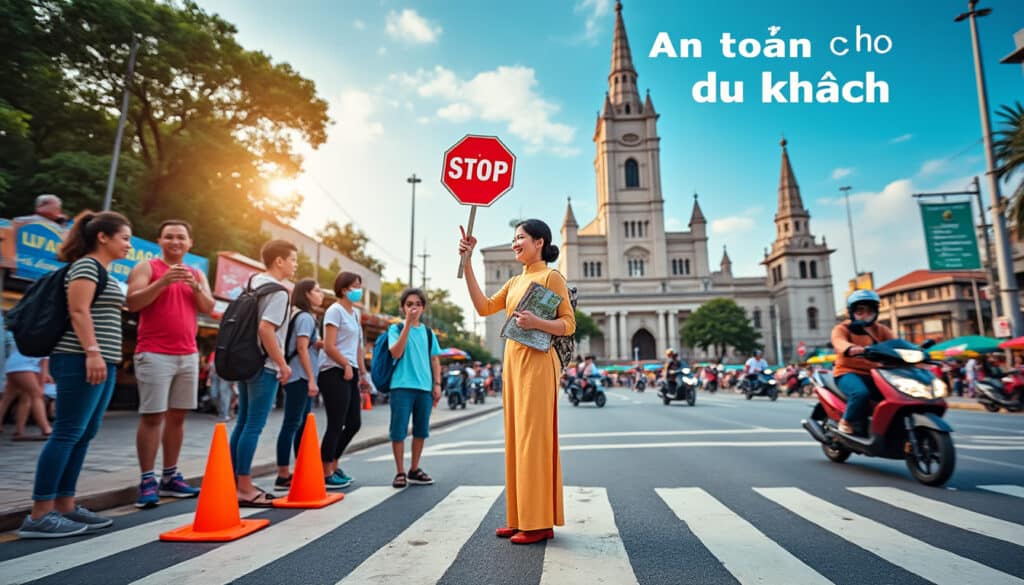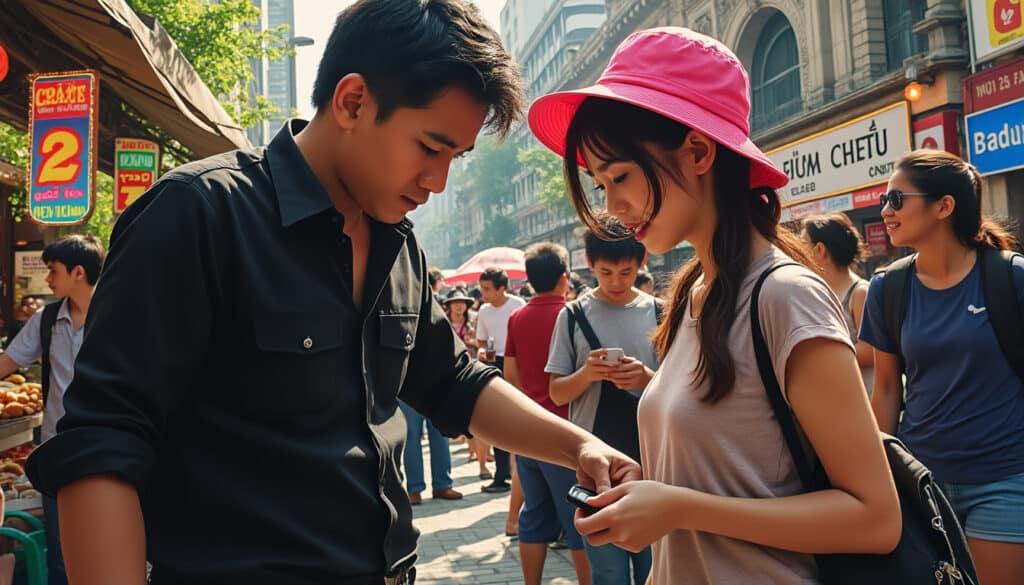In recent years, Ho Chi Minh City has emerged as a vibrant hub of civic engagement and activism, reflecting a broader wave of social unrest sweeping across Vietnam. As economic and social conditions evolve, so too have the means and motivations for protests, often driven by concerns over human rights, social justice, and environmental preservation. The streets of this bustling metropolis have become a canvas where people from various walks of life come together for peaceful demonstrations, demanding accountability and change.
The Seeds of Protest: Understanding the Roots of Unrest
Understanding the roots of protests in Ho Chi Minh City requires delving into Vietnam’s complex socio-political landscape. While the city is known for its economic dynamism, there is an undercurrent of dissatisfaction that stems from various socio-economic pressures.
One of the most significant triggers is the widening gap between the rich and the poor. Rapid urbanization and economic growth have benefited the affluent, while many remain marginalized, struggling with inadequate public services and rising living costs. This economic disparity often translates into social discontent, fueling protests as a form of grassroots resistance.
Furthermore, censorship and lack of free speech are notable issues in this one-party state. The Vietnamese government’s stringent control over information and intolerance for dissenting voices exacerbates public frustration. Activists and ordinary citizens alike have expressed their discontent over these restrictive measures, calling for greater transparency and civil liberties. This sentiment is often echoed on platforms such as Change.org, where petitions call for policy changes and greater civic freedoms. 🌐
Environmental degradation adds another layer to the unrest. Urban pollution, unregulated industrial growth, and environmental policies that prioritize economic gain over ecological sustainability have provoked numerous protests. The public outcry for clean air, water, and the preservation of natural resources underscores the growing environmental awareness among Vietnam’s youth, who are increasingly concerned with the long-term implications of climate change.
The Role of Youth Empowerment in Ho Chi Minh’s Social Movements
In Ho Chi Minh City, the vigor of youth plays a pivotal role in driving civic movements. The city’s younger generation is more educated, tech-savvy, and globally connected than ever before. Their exposure to international perspectives on governance and human rights kindles a spirit of activism. These young activists use social media platforms to mobilize, educate, and engage the community, challenging societal norms and demanding change.
The energy and enthusiasm of these youth-led initiatives have brought fresh ideas and a new urgency to traditional modes of community organizing. Young people have been instrumental in transforming local protests into national movements by leveraging the power of digital communication. They connect, collaborate, and strategize, making their voices heard beyond geographical barriers, thereby impacting national and even international policy dialogues. 💻
| Trigger | Impact on Protests |
|---|---|
| Economic Disparity | Drives socio-economic protests and demands for equitable policies. |
| Censorship | Sparks protests for freedom of speech and political reform. |
| Environmental Concerns | Leads to protests against pollution and calls for ecological conservation. |

A History of Repression and Resilience: The Legal Framework
The legal repercussions faced by protesters in Ho Chi Minh City are rooted in Vietnam’s strict penal code, particularly when addressing civic unrest. The country’s legal framework allows severe penalties for activities deemed as “disrupting public security.” For instance, the case of Truong Huu Loc, who received an eight-year prison sentence under Clause 1, Article 118 of Vietnam’s 2015 Penal Code, exemplifies the harsh judicial measures taken against dissent.
This legal backdrop is indicative of broader governmental efforts to suppress protests and maintain social order. More than 100 people have been tried and convicted for their involvement in demonstrations, with charges often focusing on activities that supposedly erode public trust in government institutions. However, these official responses spark further disillusionment, especially among young, aspiring leaders who see the punishments as disproportionate and unjust.
Despite such crackdowns, movements persist, driven by the resilience of activists who adapt by shifting their strategies and tactics. This adaptability is evident in the way protestors maintain their focus on human rights causes, leveraging international support and criticism of Vietnam’s legal practice from organizations such as Amnesty International.
Legal and Cultural Resistance: Navigating the Barriers
Protesters face multifaceted challenges that extend beyond legal constraints. Cultural factors, such as traditional values that emphasize social harmony and respect for authority, can suppress dissent. Yet, activists navigate these cultural barriers by framing their causes as aligned with community values, such as justice and familial welfare.
- 📜 Awareness Campaigns – Educating the populace about their constitutional rights and global human rights practices.
- 🤝 Community Support Systems – Building grassroots networks to offer moral and logistical support to detained activists and their families.
- 📈 International Advocacy – Engaging with international human rights bodies to apply diplomatic pressure on the Vietnamese government.
These strategies are not only attempts at circumventing oppression but also serve to elevate public awareness about civic issues, ensuring that such causes remain in the public consciousness.
The Power of Digital Activism: Social Media’s Role in Protests
In the modern age, digital platforms play a crucial role in shaping the landscape of protests in Ho Chi Minh City. Social media sites like Facebook, Instagram, and Twitter serve as vital tools for organization and dissemination of information. These platforms have democratized access to information and amplified the voices of many who would otherwise remain unheard.
Activists utilize these tools to orchestrate rallies, share updates, and broadcast the realities faced by protesters during demonstrations. For example, during the June 2018 protests, videos and live streams captured by activists went viral, raising international awareness and support. Such content is crucial in drawing attention to the causes behind the protests and the responses by law enforcement.
Successes and Challenges of Digital Mobilization
While digital platforms have empowered activists, they also present several challenges. Online surveillance and cyber attacks are significant threats that can suppress online freedom of speech. In response, activists employ coded language and private messaging apps to communicate securely, thus illustrating the constant adaptation to maintain momentum.
The strength of digital mobilization lies in its ability to swiftly galvanize public support. Through hashtags and online campaigns, movements gain traction and visibility, forming a virtual network of solidarity that can transcend national borders. This connectivity makes it possible to organize global rallies and advocate for change, showcasing the powerful synergy between local activism and global support. 🌐
Global Solidarity: Connections Beyond Borders
The protests in Ho Chi Minh City have drawn international attention, creating an atmosphere of global solidarity. The interconnectedness afforded by technology enables international communities to support civic causes by spreading awareness, applying diplomatic pressure, or offering refuge to activists.
International non-governmental organizations (NGOs) and human rights groups play a pivotal role. By spotlighting human rights violations and aiding oppressed activists, they bring much-needed global scrutiny to national issues. Furthermore, expatriate Vietnamese communities continue to engage with these causes, funneling resources, and support back to their homeland. 📢
The Role of the Vietnamese Diaspora in Supporting Protests
The Vietnamese diaspora amplifies movements within Vietnam by holding rallies in cities worldwide, thus drawing attention to the situation back home. These expatriate communities act as external pressure points, lobbying foreign governments to leverage their influence over Vietnam’s leadership to enhance human rights and democratic principles.
- 🌍 Hosting international conferences on human rights in Vietnam.
- 💬 Engaging in dialogue with international policymakers to advocate for minorities’ rights.
- 🎭 Organizing cultural events that draw attention to Vietnamese sociopolitical themes through art.
Indeed, this worldwide network of solidarity enhances the capacity for change and exemplifies the evolving nature of global civic engagement, reflecting not only a shared commitment to social justice but also an understanding that these challenges transcend borders.
The Future of Civic Engagement in Ho Chi Minh City
The trajectory of civic engagement in Ho Chi Minh City remains a subject of intrigue and observation as Vietnam evolves both socially and politically. As activists continue their pursuit of justice and equality, the question remains: How will these civic movements reshape the city and the broader national discourse in the coming years?
Potential developments in this sphere could involve increased international collaboration and more sophisticated use of digital tools to sidestep censorship. Activists might also focus more on educating the public about their rights, using techniques that blend traditional outreach with modern communication strategies. These approaches can help bridge cultural divides and stimulate an inclusive dialogue among all sectors of society.
Exploring Future Trends in Civic Activism
Several trends are likely to influence the future landscape of protests and social movements in Ho Chi Minh City:
- 🤖 Technological Advancements – As new technologies like AI and blockchain emerge, they may provide secure avenues for activists to coordinate and communicate.
- 🌱 Environmental Activism – The global climate crisis is expected to remain at the forefront, with local protests advocating for stronger environmental policies.
- 🚀 Youth-Led Initiatives – With Vietnam’s youth becoming increasingly empowered, their ability to inspire and mobilize populations will be key to future movements.
The endurance of these demonstrators and their dedication to peaceful transformation signal a vibrant and resilient civic society that continues to strive for a more just and equitable future. It is these movements, rooted in the passionate spirit of community and solidarity, that will undoubtedly shape the socio-political fabric of Ho Chi Minh City and beyond.
FAQ
Here are some common questions about protests and social unrest in Ho Chi Minh City:
- What are the main causes of protests in Ho Chi Minh City? Economic inequality, government censorship, environmental issues, and political repression are primary causes.
- How do activists in Ho Chi Minh City use digital platforms? They leverage social media for organization, raising awareness, and gaining international support.
- What role do international communities play in Ho Chi Minh’s protests? They provide global awareness, resources, and diplomatic pressure to support the causes.

Ho Chi Minh City, a pulsating hub of Vietnamese culture, history, and culinary delights, beckons travelers from around the globe. With its bustling streets filled with the aroma of street food and the sounds of scooters zipping by, this vibrant…

Cleanliness and hygiene in Ho Chi Minh
In the bustling city of Ho Chi Minh, the vibrant chaos of daily life intertwines with a growing need for improved cleanliness and hygiene. As a melting pot of traditional Vietnamese culture and modern urban development, the city faces a…

Pickpocketing and theft in Ho Chi Minh
In the bustling urban landscape of Ho Chi Minh City, a tapestry of culture, history, and modernity intertwines to create an irresistible allure for travelers worldwide. Yet, amidst the vibrant street life and intoxicating aromas of local delicacies, there lingers…

Safety in Ho Chi Minh for travelers from different countries
Ho Chi Minh City, the bustling heart of southern Vietnam, is renowned for its vibrant culture, tantalizing food scene, and historical landmarks that beckon travelers from around the globe. However, like any other major city, safety is a concern often…
Transport safety in Ho Chi Minh
Ho Chi Minh City, also known as Saigon, is the bustling heart of Vietnam, a city renowned for its vibrant mix of cultures, captivating history, and bustling streets. Yet, amid the aromatic allure of street foods and the lively energy…
Despite its reputation as a bustling metropolis, Ho Chi Minh City often surprises travelers with its unexpectedly low violent crime rate, making it a compelling destination for those concerned about safety. As Vietnam’s cultural and economic hub, the city invites…

